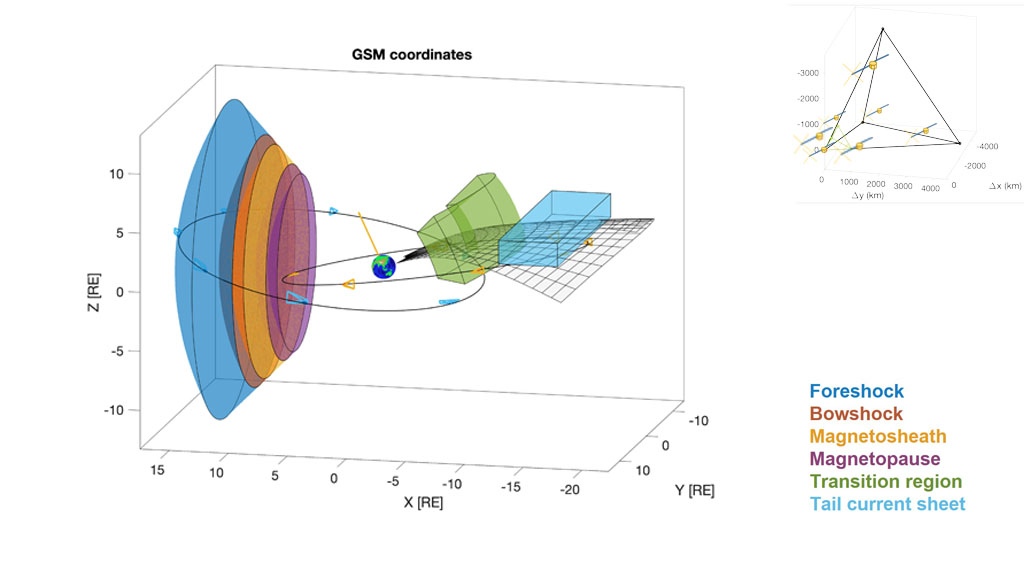MISSION
The Plasma Observatory Mission
Plasma Observatory (PO) is a mission proposed in response to the ESA M7 call and selected for the Phase A study. PO is tailored to study plasma energization and energy transport in the Earth’s Magnetospheric System through simultaneous measurements at both fluid and ion scales.
Mission. PO will allow us to resolve for the first time scale coupling in the Earth’s Magnetospheric System, leading to transformative advances in the field of space plasma physics with implications on research fields that span from space weather to the understanding of the farthest astrophysical plasmas. To this goal, the PO mission exploits a constellation of seven identical spacecraft (Sister Spacecraft – SSC) flying in a two tetrahedral formation with a common vertex on a orbit that covers all the key regions of the Magnetospheric System including the foreshock, the bow shock, the magnetosheath, the magnetopause, the magnetotail current sheet, and the transition region. This will permit to fully perform ion-fluid multi-scale measurements in 3D, including the computation of gradient physical quantities at two scales. PO baseline orbit is an HEO 8×17 RE orbit with an inclination of 15° and spacecraft separation ranging from fluid (5000 km) to ion (30 km) scales.
Lead Proposer
Maria Federica Marcucci

maria.marcucci@inaf.it
Co-Lead Proposer
Alessandro Retinò

alessandro.retino@lpp.polytechnique.fr

Two PO orbits at six months apart
The payload on board the SSCs of the inner tetrahedra provide measurements enabling a detailed characterization of electromagnetic fields and particles with time resolution sufficient to resolve ion-kinetic physics. The outer SSCs payload give a full characterization of the plasma at the ion and fluid scales providing the context where energization and transport occurs.